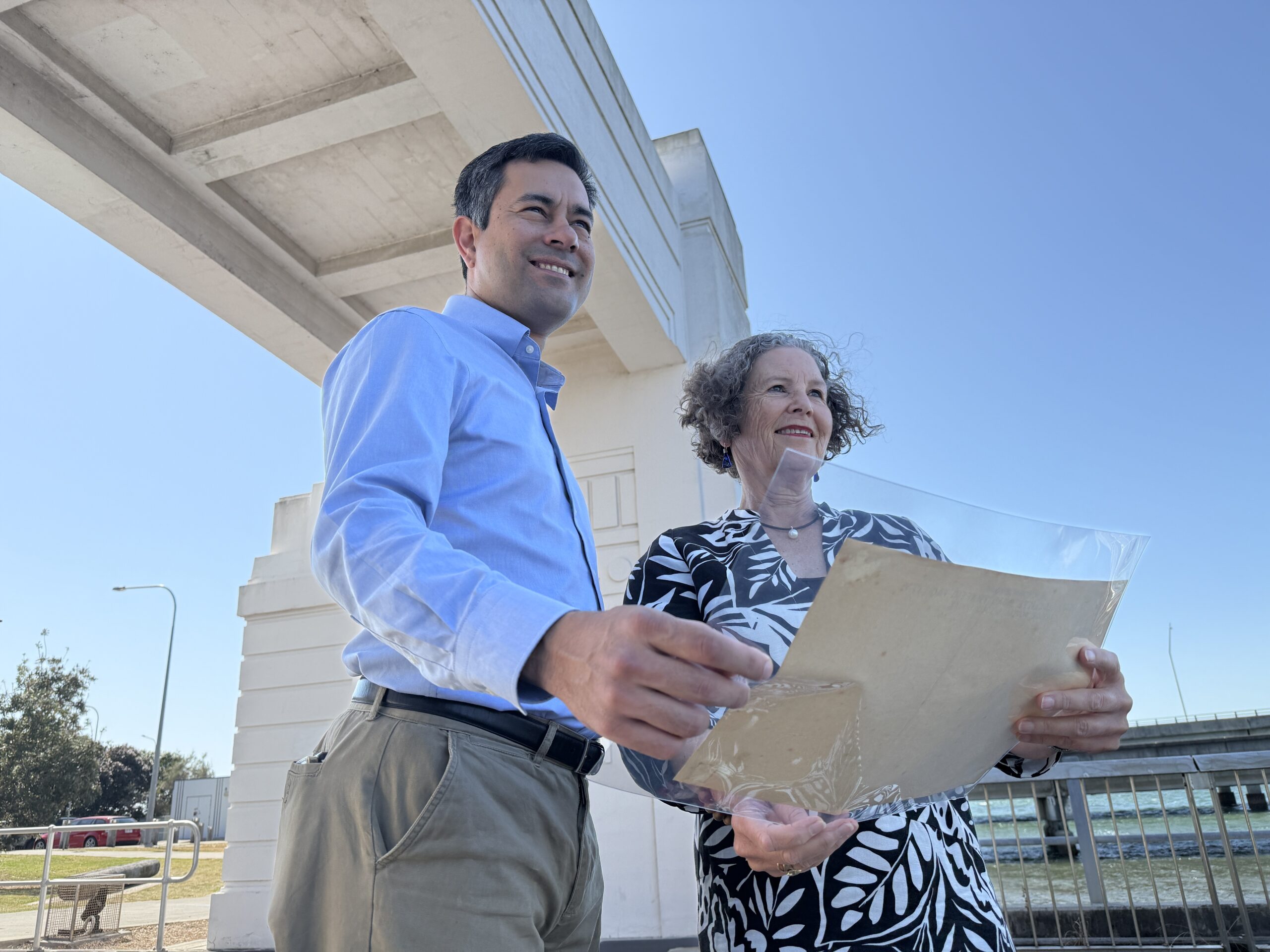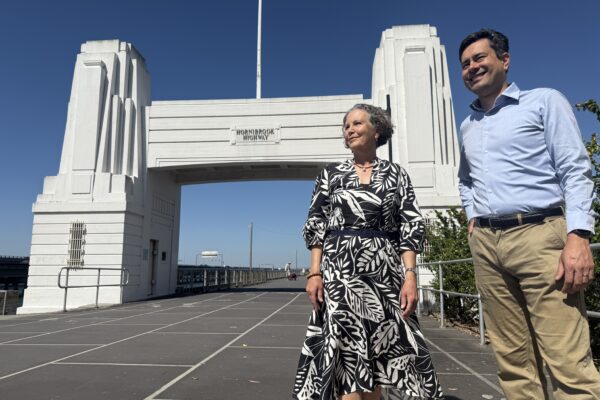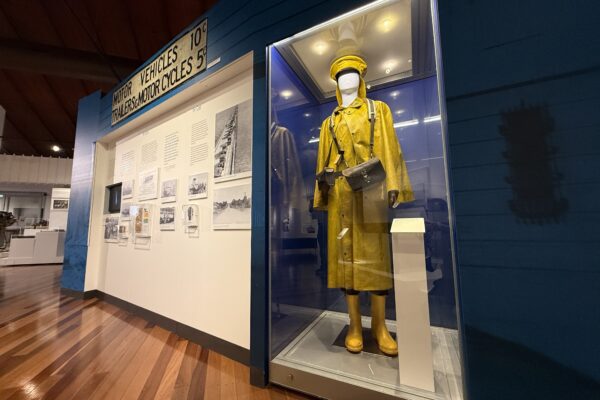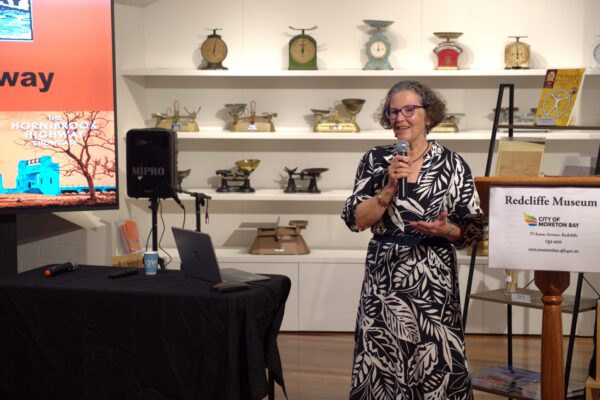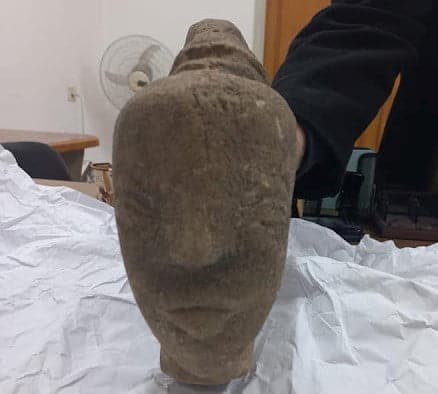In 1935, industrialist Sir Manuel Hornibrook gave cause for Brisbane residents to celebrate amid the Great Depression and a slide to world war.
The cause was a 2.6km-long bridge between Clontarf on the Redcliffe Peninsula and Brighton (Sandgate).
PHOTO GALLERY: A visual look at the building and opening of the bridge.
On October 4, 1935, after three years, the Hornibrook Bridge opened. Considered at the time to be the longest road viaduct in the Southern Hemisphere, it gave drivers a faster, more direct link between the city and the peninsula.
(At one point, there were three bridges spanning the expanse of water between Clontarf on the peninsula and Sandgate.)
The 90th anniversary of that opening was commemorated on Saturday with a ceremony at Redcliffe Museum featuring Julie Hornibrook, granddaughter of Sir Manuel.
She paid tribute to her grandfather’s ingenuity and patience in making the project a reality during what were difficult times.
“Projects like these were built in tough times,” she says.
“They needed vision, innovation and a lot of collaboration for problem solving. They were all built before computers were invented and bridges like the William Jolly and Story bridges (also built by Hornibrook) have stood the test of time,” she says.
“I really valued playing my part in bringing the legacy of my grandfather and these big build projects back to life. In doing so, I found people are so interested in the history and have connections to those bridges today.”
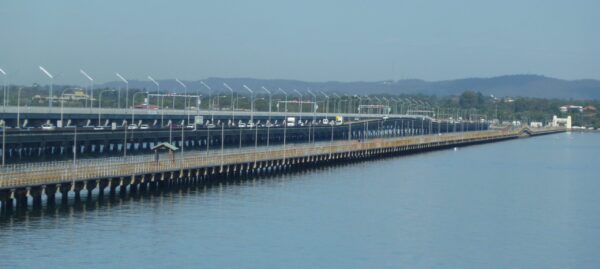
To get the money he needed for timber supplies and labour during the Great Depression, Sir Manuel persuaded government to set up a franchise to charge a toll of one shilling (10 cents) which lasted for the 40-year life of the franchise.
Hornibrook is proud that residents of Redcliffe can remember the timber bridge
“The art deco portals and fishing pier are all that remain now but it is still celebrated in memory,” she says.
“A lot of local people have stories about the bridge,” she says.
Moreton Bay City Council (MBCC) Mayor Peter Flannery says the toll bridge’s opening wrote a new chapter for the Redcliffe Peninsula by providing direct access to Brisbane.
“When you consider the scale of what was proposed and the logistics involved, the Hornibrook Bridge was truly a remarkable feat of engineering,” he says.
“We owe a great debt to Sir Manuel Hornibrook.”
Councillor Karl Winchester says that “ while it lives on today in a different form, a new generation of locals are still able to enjoy this piece of history”.
Fellow councillor Sandra Ruck said the bridge left an indelible mark on life on the Redcliffe Peninsula.
“To this day, the Hornibrook Bridge remains one of the few game-changing projects that revolutionised transport in our area,” she said.
THE HORNIBROOK BRIDGE
The bridge weighed 19,125 tonnes and was supported by 11,676 decking planks, 150 tonnes of reinforced steel and 879 reinforced concrete piles.
About 2.5 million superfeet of hardwood timber from the Obi Obi valley and Kilcoy was used.
It was considered the longest road viaduct in the Southern Hemisphere in 1935.
The bridge was used for 44 years before it was closed to in 1979 when the adjacent Houghton Highway bridge opened.
The opening of the Ted Smout Bridge in 2010 saw the Hornibrook Bridge largely demolished or turned into a fishing platform at the Clontarf end.

